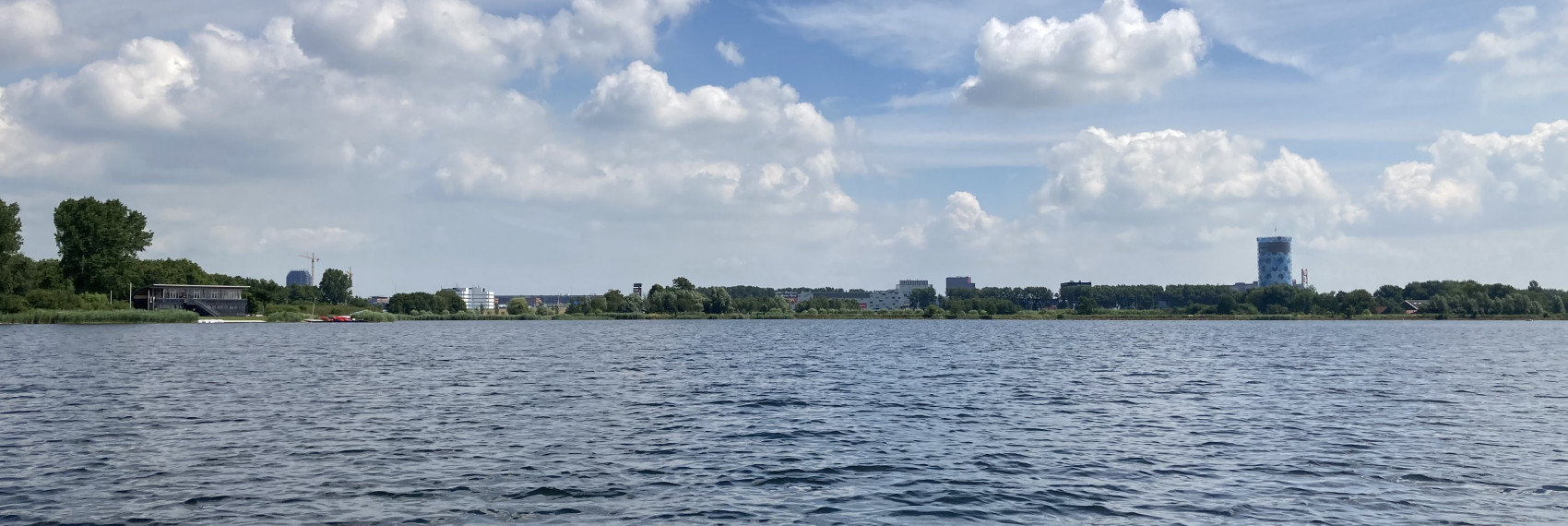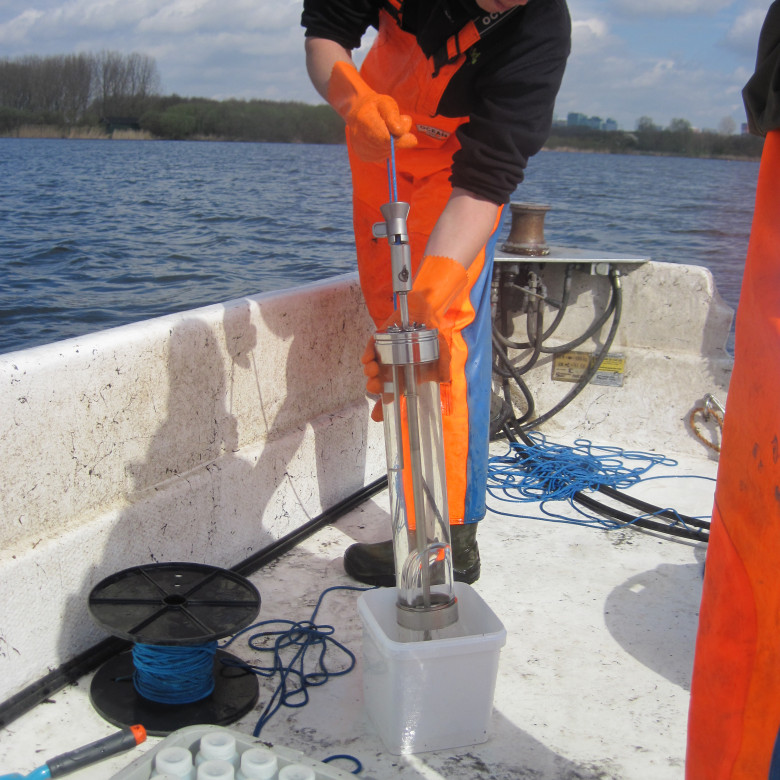Hypolimnetic oxygenation lake Ouderkerk
Lake Ouderkerk (70 ha) is a former sand mining lake located southeast of Amsterdam, near Ouderkerk aan de Amstel. The lake is more than 40 metres deep at its deepest point, causing thermal stratification. Due to high phosphate concentrations, there are problems with toxic blue-green algae blooms almost every summer.
Hypolimnetic oxygenation
Since 2010, energy company Vattenfall (formerly Nuon) has been extracting cold water from the hypolimnion to sustainably cool offices and buildings in Amsterdam Southeast. In this process, the cold water is pumped from the hypolimnion, fed into a closed cooling water circuit and, after use, discharged back into the lake's epilimnion. Because the anaerobic deep water from the hypolimnion is much richer in phosphate than the surface water during the growing season, there was a risk that the growth of blue and/or green algae would increase significantly. To reduce the phosphate concentration in the water, instead of dephosphatising the return water, the choice was made for hypolimnetic oxygenation.
Hypolimnetic oxygenation involves dosing pure oxygen through tubes just above the sediment. This is expected to lead to the oxidation of reduced iron, precipitating it together with phosphate. This mimics the natural iron trap at the interface between soil and oxygenated surface water. This will also greatly reduce the mobilisation of phosphate from the phosphate-rich sediment. The sediment of lake Ouderkerk is also rich in reduced sulphur and oxidation of this, however, can lead to severe acidification if the buffer capacity of the soil is not high enough to neutralise the acid produced.
Preliminary research
A laboratory experiment showed that oxidising sediment from lake Ouderkerk is a suitable method, at least in the short term, to reduce phosphate concentrations to almost zero via the binding of phosphate to oxidised iron. The experiment also showed that the sediment is not very sensitive to acidification and it is expected that acidification in practice will be lower than in the laboratory experiment.
Research plan
Based on the results of the preliminary study, Waternet and Vattenfall decided to apply this innovative method in practice and the oxidation system was put into operation in spring 2010. To track its effects and identify possible problems in time, all aspects of the aquatic system were intensively monitored for 6 years (2010-2015) by Research Centre B-WARE in collaboration with Wageningen UR, Bureau Waardenburg, ATKB and Stichting Bargerveen. The research was subsidised from the European Regional Development Fund (EFRO) and the Province of Noord-Holland. Since 2016, the effects of hypolimnion oxidation on water quality have been monitored on behalf of Vattenfall.

